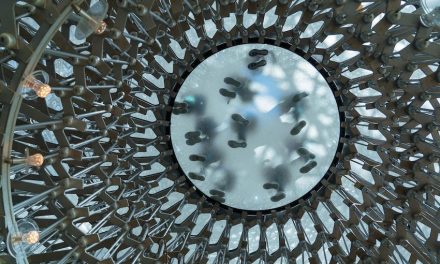3D printing may be an umbrella term for all additive manufacturing processes, but there are several ways of accomplishing layer manufacturing. Laser systems manufacturer TRUMPF looks into the benefits of two of these: laser metal deposition (LMD) and laser metal fusion (LMF)
Conventional additive manufacturing (AM) processes for metal-based components comprise a laser that fuses metallic powder together to form layers of material. Occurring in a chamber flooded with inert gas and called selective laser melting (SLM), this process is able to create complex components.
Many parts, however, do not have internal channels, cavities or complex forms. In addition, it is often favourable to apply additional material to existing components – adding a threaded mating surface to a pipe, for instance. Alternatively, consider the need to change the surface geometry of a tool. In these cases, laser metal deposition (LMD) becomes attractive.
LMD inserts the filler material – powder or wire – directly into the melt pool formed by a laser beam, creating a layer of beads welded to each other. The powder-based version of LMD is particularly promising as it is 3D-capable – many layers build up to produce a body that (because the metal powder is supplied coaxially to the laser beam) can grow in every direction.
As an alternative AM process, not only is the equipment technology already available, but it can achieve impressive deposition volume and speed. With volumes of up to 500cm³/hr, it beats conventional manufacturing processes not only from a technological perspective but often in terms of cost-effectiveness. Furthermore, it imposes scarcely any restrictions on developers with respect to combining materials – the process can produce almost any kind of sandwich structures and graded layers. Of further benefit, the process is performed in ambient air, which reduces non productive and set-up times, and means that even large components can be processed.
Using LMD as an AM process, it is possible to choose from a wide variety of materials in powder form, including steels, alloys based on Ni, Co, Al, Cu or Ti, as well as WC or TiC embedded in metallic matrices.
LMD has wide potential across manufacturing industry and particularly for applications in aviation, aerospace, energy, petrochemicals, automotive and medical technology. It can be used for coating and repair, and for joining processes such as bridging gaps. LMD is also good for generating entire components and combining different manufacturing methods. As such, a conventionally cast or formed base body can be offered cost effectively in a range of versions thanks to this additive method. It is also possible to combine LMD with laser welding and cutting.
Laser Fusion
In LMF systems, the component is created layer by layer from a bed of finely divided powder. This is especially suitable for parts that are complex in their geometry – such as those with internal channels and hollow spaces, and for economical manufacture of custom parts, prototypes or short production runs.
Series production is, however, also a reality as the machines are getting more and more productive by using, for example, multi-laser technology. A large number of metallic materials in powder form can be used, including steels, aluminium and titanium.
There are a number of advantages to LMF technology. For instance, freedom of design is almost limitless, while elaborate forms and individual components can be quickly, flexibly and profitably realised. When conventional production methods reach their limits, LMF can provide the answer. It is therefore important to implement a new way of thinking, as design for AM is often the key.
In terms of applications, the spectrum is wide. Everything from tool- and mould-making, where complex tools are made with conformal cooling, through to medical or dental applications such as implants, crowns and dental bridges.There is also high potential for demanding applications in the aerospace industry and turbine construction. As an example, LMF paves the way for the ultimate in lightweight aerospace designs. Weight savings of between 30 and 50% are possible with the same, or even better, mechanical qualities.
Ultimately, there is no doubting the potential of AM. The global market volume of AM machines, products and services has grown substantially in recent years. The technology is expected to make a rapid transition from prototyping to mass production of parts and accessories, with already established forms of AM such as LMF- and LMD-based processes driving this growth.

